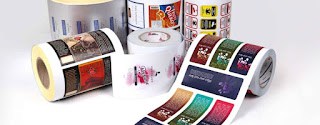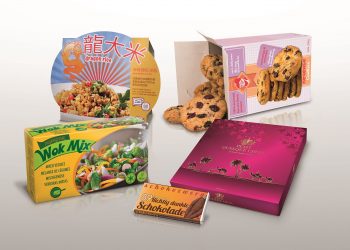Label printing technologies have undergone a sea change after the onset of 21st century. In the beginning of new millennium, the flatbed and letterpress processes made way for the narrow web flexographic printing which eventually grew to become the most preferred print technology for labels. With technological advances in prepress and plate-making process, Flexo print quality became closer to offset. This was followed up by hybrid printing using flexo, screen, gravure and later also offset printing in a single pass. We have been seeing the convenience of desktop office printers, inkjet or laser but they remained that way for long and were not used for high quality labels in roll form. It is only in the second decade of the 21st century that digital label printing began evolving. By middle of the decade, it was growing substantially in the western part of the World, yet but in India it did not find many takers.
In May 2015, I reviewed and wrote about the indulgence of Indian label industry in Digital printing equipment, I interviewed leading label printing companies of that time in an article titled; “Label Printing in India, digital has to wait”, available at the link; https://harveersahni.blogspot.com/2015/05/label-printing- in-india-digital-has-to.html.
In the summation I wrote; I am quite amazed by the similarity of responses from most of the persons who responded. All of them had expressed that the cost per print in digital does not prove it to be a viable proposition, considering the prohibitive cost of the equipment and that of ink and consumables. The undercurrent in all expressions is that digital printing as things stand now will not be the mainstream technology. It will co-exist with existing technologies and will be used for specific demanding needs. As for the time frame before digital printing becomes largely visible and used in label printing in India, they said it varies between 3 to 5 years. So, for the time being, “It has to wait a while!”
Two years hence, on May 7th 2017 I did yet another survey and wrote my article titled, “Digital label printing in India, the journey has begun!” Self Adhesive Labels Industry In India and The World: Digital label printing in India, the journey has begun! (harveersahni.blogspot.com). My estimation was as follows: By latest count, the population of leading brands of digital label presses in India had reached twenty-two in number. This was besides the low value small printers that some companies may have acquired. Now this was a fairly impressive figure when just until over a year back the industry felt that digital has to wait. Estimating the size of the digital label market, I calculated the total consumption in the industry for digitally printed labels to over 52 million square meters per annum, which translated into to almost 5% of the total self-adhesive labels in India to be printed digitally. This surely indicated that for digital label printing in India, the journey had begun!
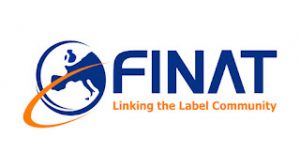 European Label Industry Association Finat had revealed in a statement that European digital label press installations overtook conventional press sales for the first time in 2017. The journey that began, has now progressed to be on a growth path. In fact, repetitive purchase confirms that the technology is not only here to stay but also attain steady growth.
European Label Industry Association Finat had revealed in a statement that European digital label press installations overtook conventional press sales for the first time in 2017. The journey that began, has now progressed to be on a growth path. In fact, repetitive purchase confirms that the technology is not only here to stay but also attain steady growth.
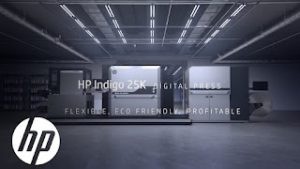 n the present private survey or research in respect of digital printing of labels in roll form, done personally by me, I have arrived at interesting results. The data being presented here is entirely my own estimation and I have not depended on any already published authenticated information. I have interacted with the following renowned brands to arrive at figures that I present in this article;
n the present private survey or research in respect of digital printing of labels in roll form, done personally by me, I have arrived at interesting results. The data being presented here is entirely my own estimation and I have not depended on any already published authenticated information. I have interacted with the following renowned brands to arrive at figures that I present in this article;
Domino
Durst
Epson
HP
Konica Minolta
Monotech
Screen
Xeikon
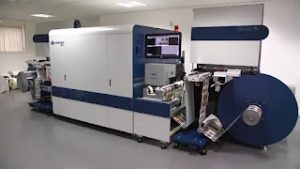 The number of digital roll label presses of leading brands in India has expanded from the 22 in 2017 to 51 in 2022 registering a CAGR (Compounded Annual Growth Rate) of 18% as regards the number of press installations. Out of these HP Indigo accounts for 16 presses which include two 25K which find usage both for labels as well as for flexible packaging and one HP Indigo for Lamitubes, Konica Minolta 10, Monotech 8, Domino 3, Xeikon 2, Durst 4, Screen 2, Epson was 5 machines as assessment done in 2017 since they did not respond I believe there have been no additions thereafter. Two water-based inkjet presses from Astronova are also in the tally of 51 presses. If we consider just the numbers, Hp has 32% share of the installations, Konica Minolta 20%, Monotech 16%, Durst 8%, Domino 6%, Epson, Screen and Astronova account for the balance . However, this is not a real indicator of the quantum of investment by label printing companies in digital printing technology. I have done the calculation on the approximate costs of these equipment, the total investment in digital roll label equipment is more than Rupees 215 Crores or about 28 million US Dollars. HP being the most expensive equipment of the lot, accounts for a whopping 66% of the investment made in value while all others remain less than 10%.
The number of digital roll label presses of leading brands in India has expanded from the 22 in 2017 to 51 in 2022 registering a CAGR (Compounded Annual Growth Rate) of 18% as regards the number of press installations. Out of these HP Indigo accounts for 16 presses which include two 25K which find usage both for labels as well as for flexible packaging and one HP Indigo for Lamitubes, Konica Minolta 10, Monotech 8, Domino 3, Xeikon 2, Durst 4, Screen 2, Epson was 5 machines as assessment done in 2017 since they did not respond I believe there have been no additions thereafter. Two water-based inkjet presses from Astronova are also in the tally of 51 presses. If we consider just the numbers, Hp has 32% share of the installations, Konica Minolta 20%, Monotech 16%, Durst 8%, Domino 6%, Epson, Screen and Astronova account for the balance . However, this is not a real indicator of the quantum of investment by label printing companies in digital printing technology. I have done the calculation on the approximate costs of these equipment, the total investment in digital roll label equipment is more than Rupees 215 Crores or about 28 million US Dollars. HP being the most expensive equipment of the lot, accounts for a whopping 66% of the investment made in value while all others remain less than 10%.
Considering the geographical spread in number of installations; 36% of the established brand installations are in the West of India, 36% in the North and 11% in South. However, in terms of value, the West leads the way, followed by South. As for label materials consumed, in 2017 I had calculated that 52 million square meters of labelstock was converted by digital printing. The consumption with increased investments and faster speeds appears to have more than doubled to over 109 million square meters registering a CAGR of 16%. As indicated by the people I interviewed there are many more installations being planned that will ensure continuous growth in this segment of label printing and converting.
Digital printing means web to print; it is an exciting process as compared to the analogue or conventional printing, yet it brings with it, challenges that translate it into a not so simple process. A technology that was initially being promoted as a complementary technology to conventional printing has reached a stage of being referred to as a competitive one. With presses going wider and running at higher speed and consumables getting affordable, it will not be long before it becomes a contemporary mainstream technology . However, those who have had the success and have understood the nuances of digital printing, are looking at expanding further in this segment of printing. I sought comments from many who have invested into digital capabilities and their responses make interesting reading.
Denver Annunciation, Janus International: Janus International are pioneers, they were the very first label manufacturing company who invested in an HP Indigo press at their Thane facility. The brothers Denver and Janus are very enterprising. They have offset, flexo and Digital printing capabilities, all of which are doing well for them. They are a company who are growing beyond the inflationary growth. Being manufacturer of beer and liquor labels, they wanted to do something different, and they took the challenge of investing in digital label printing. Since HP was the only established supplier of digital presses at that time with a proper setup, it was natural for them to install an HP Indigo press. Denver says, “Digital helped us cater to smaller businesses and widen our customer base while our other capabilities drove in the volumes.” According to him digital does provide opportunities for creativity but it is not a standalone equipment that will deliver. You need different prepress and post-press finishing setup. It also involves additional resources that add up to per unit cost like requirement of same amount of manpower for packing, delivering and invoicing smaller shipments. Despite this adds Denver, “it gives a fair return and we will definitely look at expanding our digital capabilities“. Referring to their experience with digital Denver says, “Initial challenges were there, it has been a long journey, but surely enjoyable”.
Anil Namugade, Trigon Digital: Trigon Digital has been in the news in recent years for their multiple investments and expansion in the state of art digital equipment. Anil Namugade Managing Director of Trigon while answering why he opted for digital says, “Good label finishing and converting for me is like oxygen to heart, blood and brain for creativity.” Trigon has invested in multiple digital equipment and the biggest of them an HP Indigo 25K, his second HP Indigo after the first 6900. He asserts that digital has helped them grow, as since their inception 14 years ago they have been using only digital technology. Their business has been growing. Anil expresses, “digital is a mindset, we need to have a bit different approach in understanding the customer’s requirements and our capabilities to serve them.”
Honey Vazirani, Leap Digiprint: Honey and Vikram, both directors of Leap Digiprints, spent 25 years in labels and packaging industry working for Paper products Ltd. later renamed Huhtamaki PPL Limited after acquisition by multinational Huhtamaki Oyj, so packaging is what they knew best. Wanting to be more futuristic, ecofriendly and wishing to initiate a small boutique business of their own, they made the choice to setup their maiden startup venture in Noida NCR Delhi. Selecting a strong digital print partner that time, HP was the best choice. The technology has helped them grow, giving the desired results from producing variable and short run of labels. Says Honey,” The turnaround times, print runs of 100-200 meters, variable printing…all the capabilities that attracted us to digital are still clear advantages.” Further she adds, “Overall it has been good experience. However, it is not as trouble free as one would expect it to be. Also, the costs and pricing need to be handled effectively but unfortunately the downstream conversion for labels (post digital printing) is not as well developed as it should be to support short runs”
Harish Gupta, Sai Digistik: Harish Gupta led Sai Digistik has invested in two digital label presses HP with liquid toner & Konica Minolta with dry toner technology. According to Harish, the dry toner technology has limitations of only CMYK printing, no white and printing on limited substrates, so we have both liquid toner and dry toner printing capabilities to have the best of both. Cost of digital printing is high, it was very good working with digital during pandemic phase-1 when manpower was short, and requirements were instant. Short runs are easy to handle, and we got focused to help startups for their smaller needs with our motto “Startup for Startups.” With no need of plates and make ready etc., the turnaround time is less, yet it is not a simple technology, one needs to study thoroughly before investing. Cost of producing labels is higher as compared to flexo, but it is felt that, as we grow in volumes the costs of consumables will reduce. However, as we see the trends globally, with manpower becoming a challenge and reducing length of jobs, digital is bound to grow and find preference.
Surendra Shriyan, Maa Flexi-label: An offset printer who realised that volume-based production has decreased with more variables and short runs, in the given scenario digital is the future for good printability and fast turnaround time. They opted for HP Indigo label press. Being new entrants, they are exploring exciting possibilities but feel pricing in digital is a challenge. After observing the changes in the western world regarding the digital label printing, even though they are convinced that it is futuristic, yet they say, “It is not all, a bed of roses.”
Nilesh Jain, Mahavir Impex: They opted for a Durst UV Inkjet label press for its print quality output without applying any primer on most substrates. Nilesh expresses that digital has helped to achieve desired results within minimal time and reduction of undesired wastages. They feel it will become the predominant technology , but the results from different digital print technologies (dry toner/liquid toner /UV Inkjet etc.) would not give a uniform and similar print result on various substrates. The advantage of digital for them is outstanding quality achieved at good speed and reduction of waste with no investment on plates and other expenses.
Manish Hansoti, S Kumar: Narrating his experience with digital label printing, Manish Hansoti says; “Looking to cater to demand of small quantity, variable printing multiple S K U’s and label on demand, we have invested in a Screen digital label printing press. We had assessed all technologies and found Screen ink jet printing technology was a better fit for us as we wanted to print labels with less ink coverage for specific customers. The cost of the ink in this process was found lower as against dry toner FASMA/click charges. We consider digital technology as part of customer service because in small volume there is no chance of making topline but can get customer satisfaction. The technology will grow if the capex goes down and ink price or click charges drop, then there will be big changes in global printing scenario. Short run or variable printing is profitable but there is limitation in getting many such orders, so we always have spare capacity. We do not see another investment in digital until costs of inputs come down.”
Priyank Vasa from Unick Fix A Form: “The Domino N610i digital label press was acquired by us in 2018. Wanting to free up our flexo capacity to improve turnaround time and job throughput, we started exploring options. We narrowed down to the Domino N610i because of Domino’s strong presence in India and its service network.
Evaluating its media compatibility, color matching, accuracy of pantone reproduction, ink cost analysis, it looked the right press for us. The press was commissioned in the beginning of 2020. Dealing with a modern technology we knew there lies a learning curve ahead. In the present-day scenario, we have been able to take up new business both for flexo and digital. Digital has added to our sales where we are able to completely leverage the opportunity cost which could not happen in flexo. We do not limit use of the digital press to small runs. It has also opened new avenues for us in respect to products like IML, Shrink sleeves, Cartons and VDP.”
Vinod Vazhapuli, Skanem India: Having run a very innovative campaign for the FMCG company Reckitt Benckiser(RB) Vinod Vazhapuli Managing Director of Skanem India is very optimistic about including more digital printing capabilities in his company’s expansion plans. Skanem had been a part of Dettol’s unique packaging commemorating Covid warriors. Please see my blogpost titled Dettol Labels used to salute “Covid Warriors”! Skanem India, a part of Norway headquartered Skanem AS was one of the two approved vendor of RB who were roped in to execute this special campaign of Dettol customized labels. The deliberations for this campaign started when Reckitt approached Skanem in second week of May 2021 and discussed the possibility of creating one hundred variably printed unique labels. Having an HP Indigo press, the capability was there. They were given an order for two million labels. It was a gigantic task as there were one hundred artworks. RB wanted the right pantone shade of Dettol and the job had to be done in speed, so Skanem requested RB to give them the artworks also in CMYK because to match the green Dettol shade as close as possible to the required shade it is necessary to have the prepress right. The approvals were done online and the material delivered in time. That is the power of digital, the rest is history.
Rajeev Chhatwal, Kwality Offset: Rajeev sums it all well, he says he sees a good future for digital label converting. Printers need to look at this technology positively and separately without drawing a comparison with analogue or current capabilities even though it is a business that needs to run parallel with your current profile of business. One of the biggest advantage of digital is that it helps one to increase customer base. A larger customer base, if attended well, ensures continued growth. To find success in digital arena one needs to accept that there is a definite learning phase and one must provide for contingencies while planning and be prepared for them. Rajeev says, “It is a business that has a bright future in which the fittest, the one with guts and endurance, will survive and excel. It is a business that provides impetus to your present business and when you do short, variable and personalized run for a customer, you have a happy customer! In a young Indian population becoming spenders, ecommerce is looking up, does it not ensure positive growth of Digital which permits variable and personalized printing? Are we not looking at the numbers of startups on rise? My next investment, maybe a year down the line, will be digital, I invested in a Xeikon with dry toner technology, which I am happy with, I will probably go for a UV Inkjet next to expand my capabilities”.
The author is grateful to the people without whose help and inputs this compilation may not have been possible. Those whose support I got, include Umesh Kagade and entire team of HP, Shayak Mukherjee of Konica Minolta, Ajay RaoRane of Domino Printech, Vikram Saxena of Xeikon, Jimit Mittal of Monotech and Ajay Agarwal of Insight Print Communication for Screen and Venkatesh Selveraj of Printronics for Durst.
The company is a total solutions provider to the label industry representing global brands supplying high-end Label presses, Inspection Systems, Allied converting equipment, Tooling, etc. Weldon also does custom coating and converting, produce Silicone Release, Papers A4 inkjet/laser label materials, Tamper Evident Label Materials and specialty tapes as a part of their manufacturing program.

